Today I would like to talk to you about a very curious recipe: "El Cocido Maragato"(“Maragato Stew”); but not curious for its ingredients, but for its way of being served.
This is a traditional stew, in the region of Maragatería, in the province of León, Autonomous Community of Castilla y León, Northwest of Spain.
It is a stew that traditionally fed farm workers, in a single meal for a hard day's work. The “maragato stew” basically consists of the elements of the field: soup, cabbage, chickpeas and seven meats. It is a very popular dish, in Astorga or the villages of its region, such as Castrillo de los Polvazares or Santiago Millas.
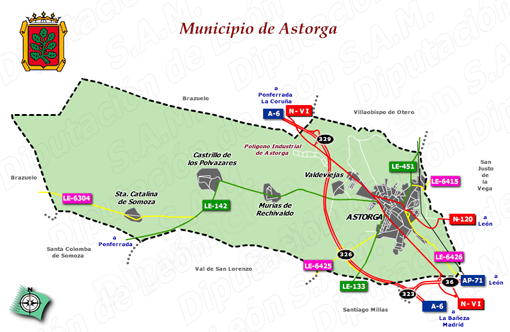
Map of the region of Astorga

An aerial view of Astorga

Castrillo de los Polvazares
One of the most outstanding characteristics of this stew is that, in the three overturns, it is served 'upside down', being first the meat of the stew, then the vegetables, to finish with the soup.

Maragato Stew
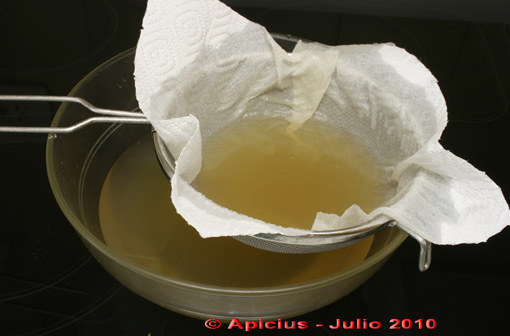
Estameña
The name “ration” comes from rationing, refers to the obligation to distribute friendly, for diners. Nowadays it usually has up to twelve meats of different types and parts. The festive chorizo, the pig's nose and the pig's ear are the most frequent together with shoulder blade,fhank ... The ration is the first that is tasted, it is the distinguishing element of the rest of the stews ones.
For the stew, the best chickpeas are those of “Pico Pardal” (a special type of chickpea from the region of Maragatería) of Valdeviejas, Quintanilla de Somoza, Piedralba de San Cristóbal and Fuentesaúco, these are cooked in a boil.

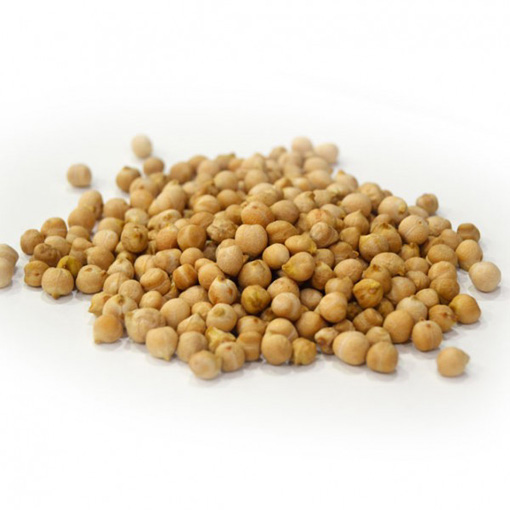
Chickpeas “Pico Pardal”
They are presented on the table in a platter or stringer. They are presented dry and separately. They are eaten after the ration (although this is never removed from the table). Only the host has the privilege of doing the “envuelta” (wrapping) (water the chickpeas with noodles of the soup).
With the chickpeas are added potatoes and cabbage, in separate platters.
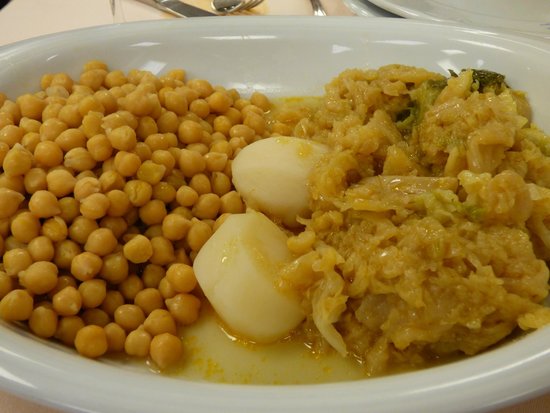
Chickpeas with potatoes and cabbage
The soup usually has noodles or loaf of bread. The broth is to drain the chickpeas and the ration. The soup of maragato stew has to be so thick that it can be cut with the spoon.
It is a dish served hot, the order of putting the contents is 'inverse': in the “maragato stew” you start with the meat and ends up in the soup.
There is much debate about the origin of this tradition. One of the theories says that it was the food of muleteers and, as they had to eat during transportation, the most solid food was served first. Another theory says that it was eaten by peasants, who were served, in the countryside, in a clay pot, and, if they started with the soup, they would arrive to cold cooked meats; therefore, they did the opposite.
The most typical dessert is usually “custard with a sweet bun”, although you can also eat “maragato sponge cake” or other desserts.
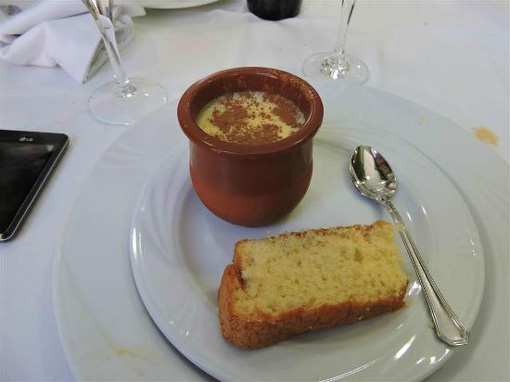
Custard with a sweet bun
Well, I hope that you will like this article and hope that you will go to the Maragateria region, to taste this wonderfull recipe.
Until my next post, kind regards,
Luis.
Sponsored by Costaluz Lawyers.
Please click below:
